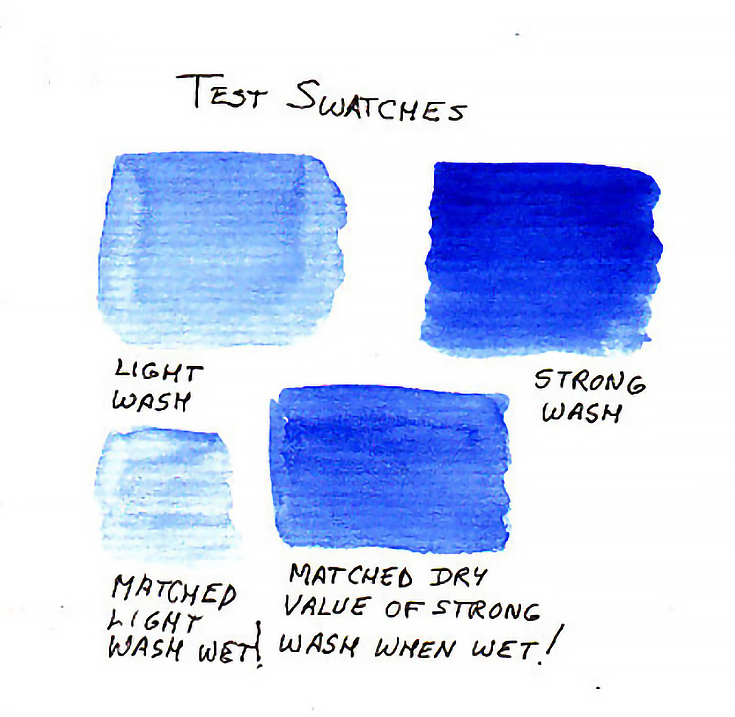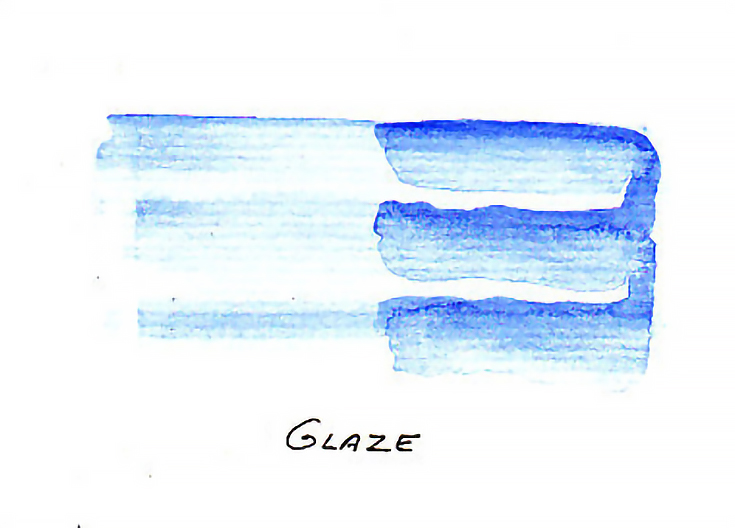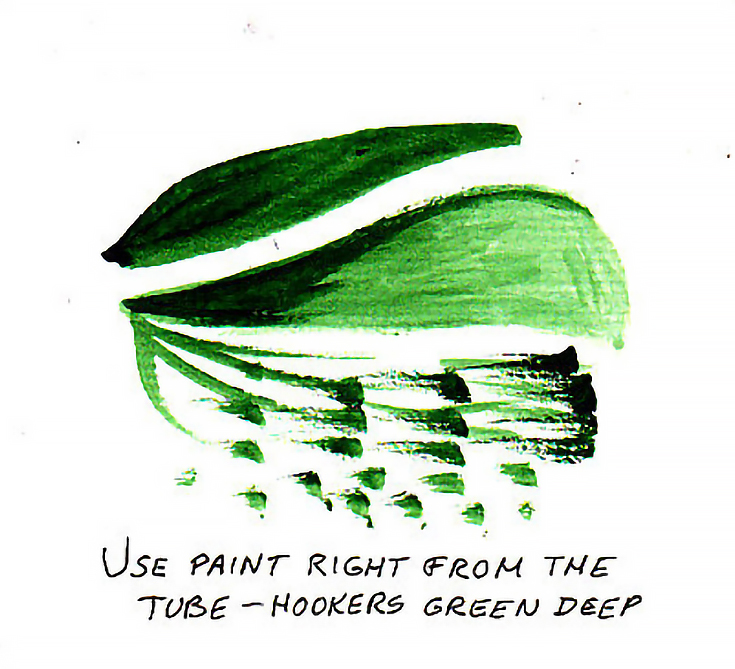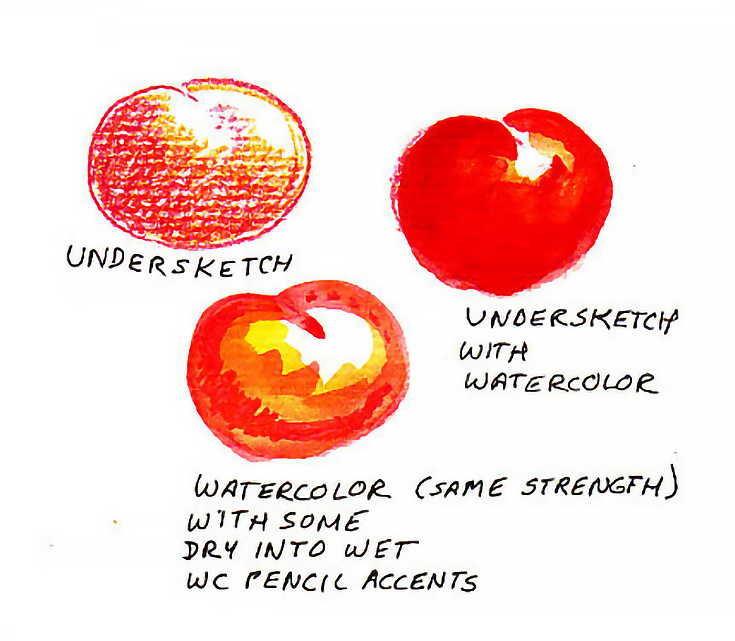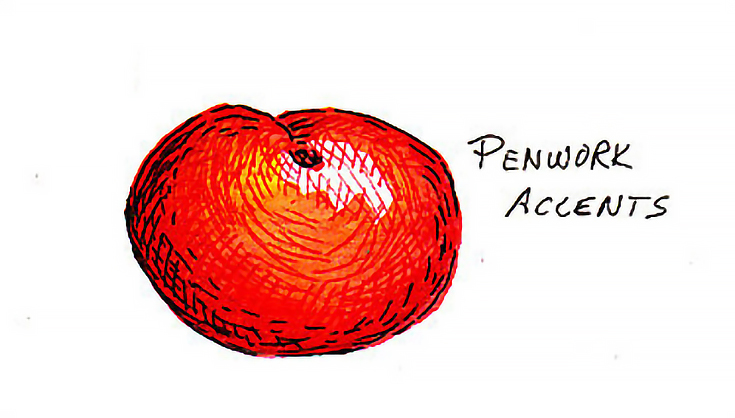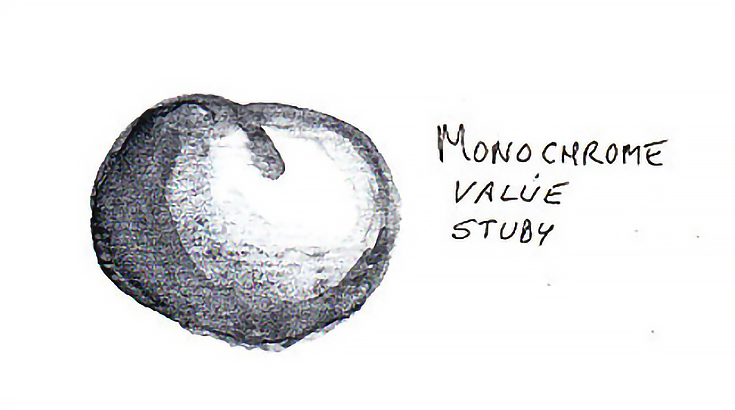When painting with watercolors, it’s not always easy to achieve pure, intense color (after all, adding water immediately makes your paints LESS colorful!)
That said, here are a few easy ways to adjust your painting style to achieve the strongest colors and values from your watercolor paints as possible.
Watercolor tips for intense color & value
1. Use artist-grade watercolors.
Artist-grade watercolors have more color and less binder, which automatically gives you extra pigment on the paper and more concentrated intensity. Here’s a direct comparison between Marie’s Transparent Watercolor and Daniel Smith Extra Fine Watercolor.
One of the reasons that artist-grade watercolors have more intense pigments is because the pigment particles may be milled finer, so that more of them fit in around each other in the same drop of gum arabic.
Of course, that’s for tubes of watercolor paint.
In pan watercolors, how the pigments are treated while the pans are being made can also affect their strength. Yarka St. Petersburg Professional watercolor pans are poured and dried rather than extruded, which protects the delicate pigments and results in colors that dry with nearly the same intensity as they look when wet.
In my opinion the brand of watercolor paint doesn’t seem to matter all that much. . . what matters is whether or not it’s an artist-grade paint. This is also true in oils and acrylics for the same reason: finer milling and increased pigment concentration always results in better colors.
2. Make test swatches and let them dry.
Watercolor has a unique problem of drying about 50% lighter than it looks when it’s wet, especially on watercolor paper. So I recommend simply mixing a wash that’s twice as dark as you want, then testing it on a scrap of watercolor paper first. This will reduce unpleasant surprises while you paint.
Let the test swatch dry thoroughly and adjust the wash up or down by adding more water or more paint till you get it to the value you want.
3. Let your painting dry, then glaze it.
If the painting’s already done and looks too light, you may be able to go over it again with a glaze to make it darker, like so:
First, let it dry thoroughly—your painting must be bone-dry for a glaze to work. In a moist climate that means letting it dry overnight. Mix the same colors again (or mix them slightly darker) then gently go over the light areas again with a glaze.
Paint area by area until the entire painting is one or two steps darker. Keep hard edges intact by letting them dry completely before adding any adjacent glazes.
Watercolor will go over other watercolor without mixing or reactivating if you work quickly (don’t linger over one spot, or scrub into the dry paint below) and of course, always make sure that it’s completely dry to begin with.
4. Use paint right from the tube.
For bold areas of intense color, don’t bother diluting the watercolor! Squeeze out a bit of Cadmium Yellow or Payne’s Grey and dip the brush right into the creamy, gooey paint. Smooth out your strokes if you like, but paint that tube color directly on your paper to get the purest colors and strongest darks.
This is also a great technique for getting good dry-brush effects, since direct-from-the-tube paint is thicker than any wash. Test it on scraps to discover how much you need to put on the brush to get either full coverage, or a good dry-brush effect.
5. Undersketch with watercolor pencils.
Watercolor pencils are made up of concentrated color, so any sketch lines or patches done with a good artist grade watercolor pencil can be covered heavily and rinsed to create a strong color.
Use more pressure and multiple layers of color for dark tones before washing. Watercolor pencils are especially good for creating small, dark, colorful accents. Draw them in, then wash with a pointed round brush.
If you draw directly onto the paper while the paper is damp, an even more intense color may result. Sharpen the watercolor pencil very finely for more control. The mark will be a little blurry and much more intense than if you created the mark and washed over it afterward. Test on scraps to understand the effect before using it on a painting.
6. Use pen accents.
Hatching and stippling can also give a beautiful textural effect to a watercolor painting that’s come out too light, since you’ll be reinforcing the lighter value areas without changing their hue. This is an excellent way to add details at the end of a painting.
Using watercolor with pen and ink produces a gorgeous traditional style, reminiscent of Audubon and numerous other classical watercolorists. India ink applied with a brush can fill in flat black areas for maximum intensity, while professional-grade colored ink can sometimes have a stronger intensity than watercolors.
Don’t be afraid to mix media if that’s what it takes to make your painting come out the way you wanted it!
Penwork is a great fix for many problems in failed watercolors. Consider looking over some of your old faded paintings to see if they can be spruced up with a technical pen, dip pen or the new breed of archival extra-fine point pens like Sakura Pigma Micron, Pitt Artist Pens or Prismacolor Archival Markers.
7. Work out your value range ahead of time.
Do a monochrome version of the painting first, even if it’s small. Create a few notan or charcoal sketches of the subject, then try it with an ink wash or watercolor wash in monochrome blue, brown or black.
Coming up with a notan will help you plan out your areas of light and dark ahead of time, as well as build a good composition from the very beginning.
All seven of these tips should be useful for adding intensity and color to your watercolor paintings, but keep your eyes open for others as well.
The end goal is to build your toolkit of techniques so that if you reach a point in a painting when it’s not doing what you want, you’ll always have a number of different methods available to transform it into a powerful, finished painting.
This post may contain affiliate links.

